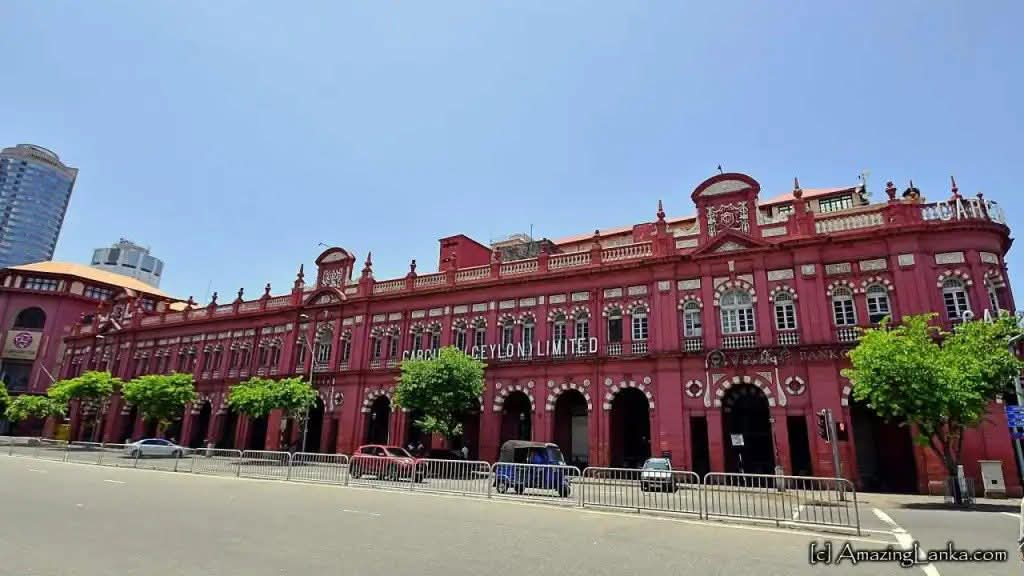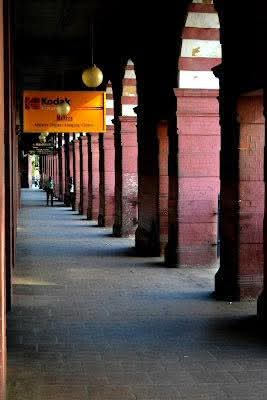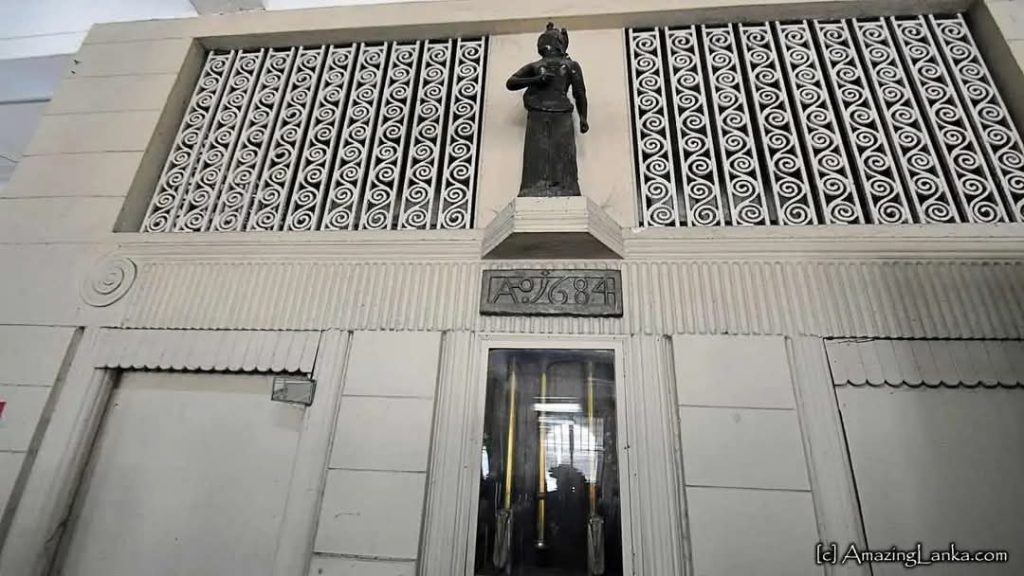Currently Empty: $0.00

May 18, 2025
0 Comments
Cargills and Millers Building & The Mysterious Statue—A Legacy Etched in Red and Wood
Colonial Grandeur Meets Commercial Prowess:
Standing proudly at the intersection of York Street and Mudalige Mawatha, the Cargills and Millers building is not just a department store—it’s a landmark woven into Colombo’s colonial past and commercial evolution. Built in 1906 in stunning British colonial style, this iconic red-brick structure still echoes with the charm of a bygone era. With hydraulic lifts and electric fans, it was a marvel of modernity at the time—one of the finest edifices east of Suez.
Beneath the red façade lies a story layered with transformation, trade, and timeless mystery.
From Dutch Mansion to Retail Royalty:
Before Cargills graced the site, the land was home to a grand Dutch mansion—the residence of Captain Pieter Sluyskens, Commander of the Dutch Fort of Galle. After his passing in 1813, the house transitioned from stately residence to warehouse under Milne & Cargills by 1850. Even Governor Frederick North, the first British Governor of Ceylon, briefly occupied the mansion before finding it too cramped and relocating to Hulftsdorp.
The Dutch building eventually gave way to the expanding ambitions of Cargills & Co. The original foundation stone, marked 1684, still remains—quietly bridging centuries of change.
Cargills: Surviving Empires and Economies:
Founded in 1844 as Milne & Co. in Kandy, the company rode the waves of Ceylon’s coffee boom and weathered its collapse. It was reborn as a tea powerhouse and later evolved into Cargills Ltd in 1896. After a takeover by Ceylon Theatres (now CT Holdings) in 1981, the company further diversified under the stewardship of Albert A. Page.
Through wars, economic downturns, and political change, Cargills remained a constant—its red brick walls absorbing every chapter of the city’s growth.
The Enigmatic Statue: Keeper of Secrets
Inside the building lies one of Colombo’s lesser-known mysteries—a wooden statue, carved in hardwood, seated quietly between the modern marvels of hydraulic lifts. Once perched high on the gable of the old Dutch mansion, this statue was carefully relocated when the mansion was demolished. And with it came whispers of ancient symbolism.
Is it Minerva, the Roman goddess of wisdom, war, and strategy? Or perhaps Mars, the Roman god of war, guarding the gates of a military commander’s home? Accounts differ. Some claim the statue came from a Dutch man-o-war, set as a palladium—a protector of the city. Others see it as a relic of agricultural and military heritage, a symbol of power in both peace and conflict.
What remains undeniable is its aura—a silent sentinel watching over the trading halls of Colombo for over a century.
Where Time Stands Still:
In an ever-changing cityscape, the Cargills and Millers building stands as a vivid reminder of how architecture, commerce, and legend can intertwine. It’s more than bricks and mortar—it’s a monument to resilience, reinvention, and remembrance.
Whether you’re a history buff, an architecture lover, or a curious wanderer, this building invites you to pause, look up, and wonder—what else has it seen?
#madebysrilankan #madeinsrilanka#vigtravel
❤️🇱🇰
📸 credit to photographers:




